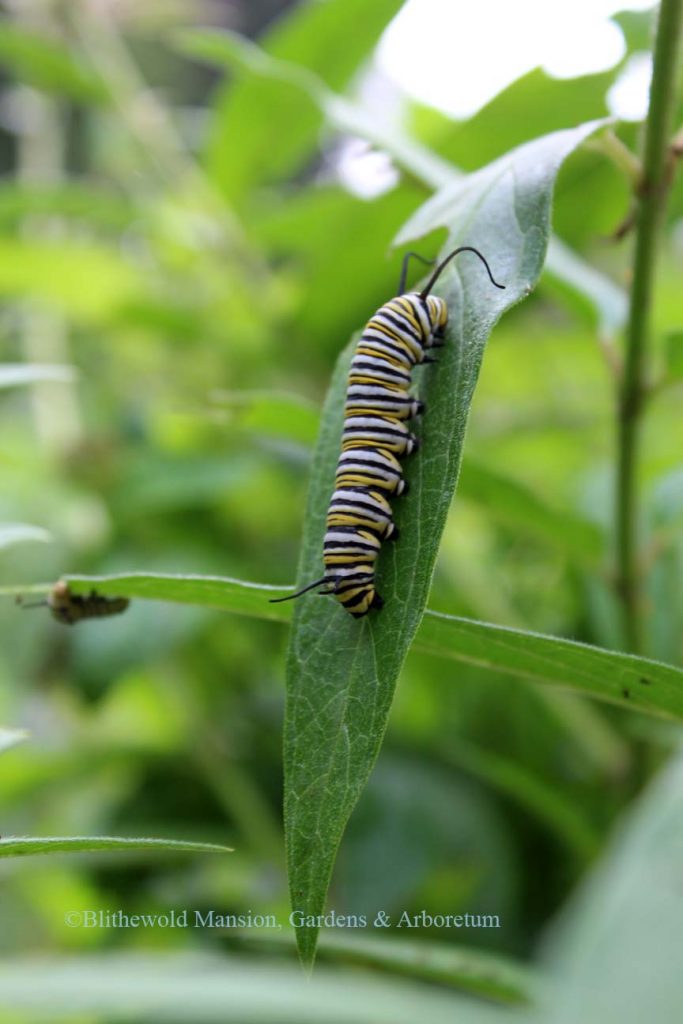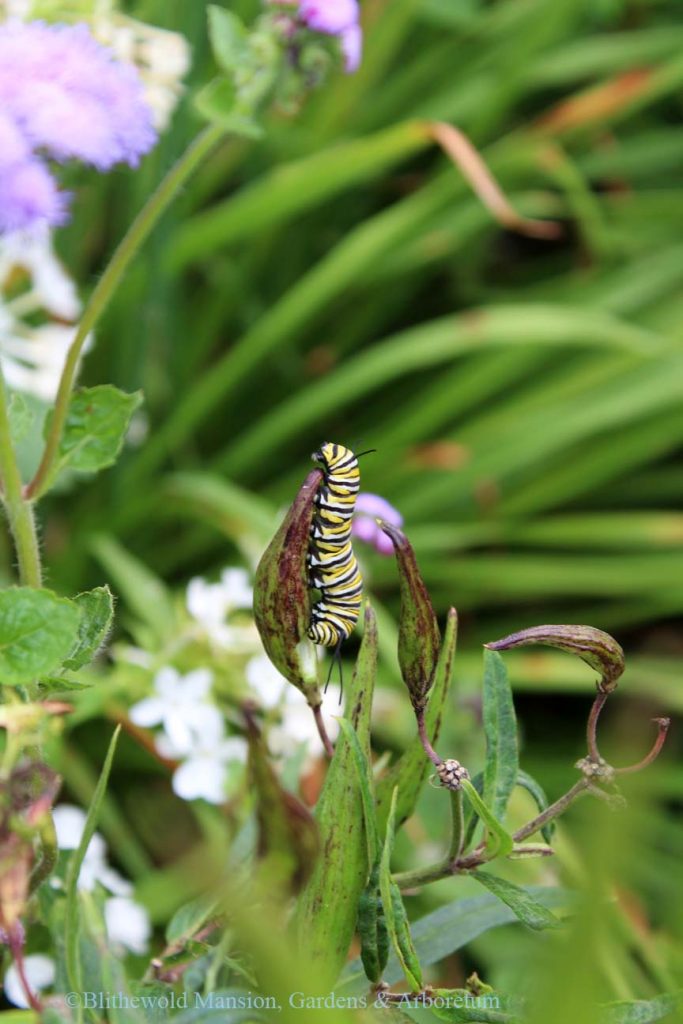Pollinator-friendly
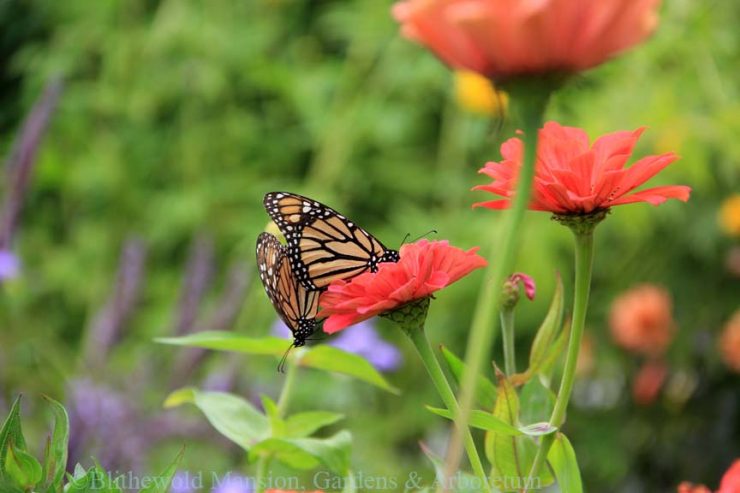
Every garden can be a pollinator garden. It does not need to look “messy” or wild or be composed completely of native plants. (I personally love a slightly wild look to a garden.) I want to feel as if I’m in a managed piece of heaven. This is how I feel about the gardens here at Blithewold – lovingly managed slices of heaven. They are designed and guided and tweaked to be as beautiful as possible. They are also pollinator-friendly. We do not use chemical fertilizer in our soil or pesticides on our plants. All of this makes any garden here a wonderful place to observe pollinators.
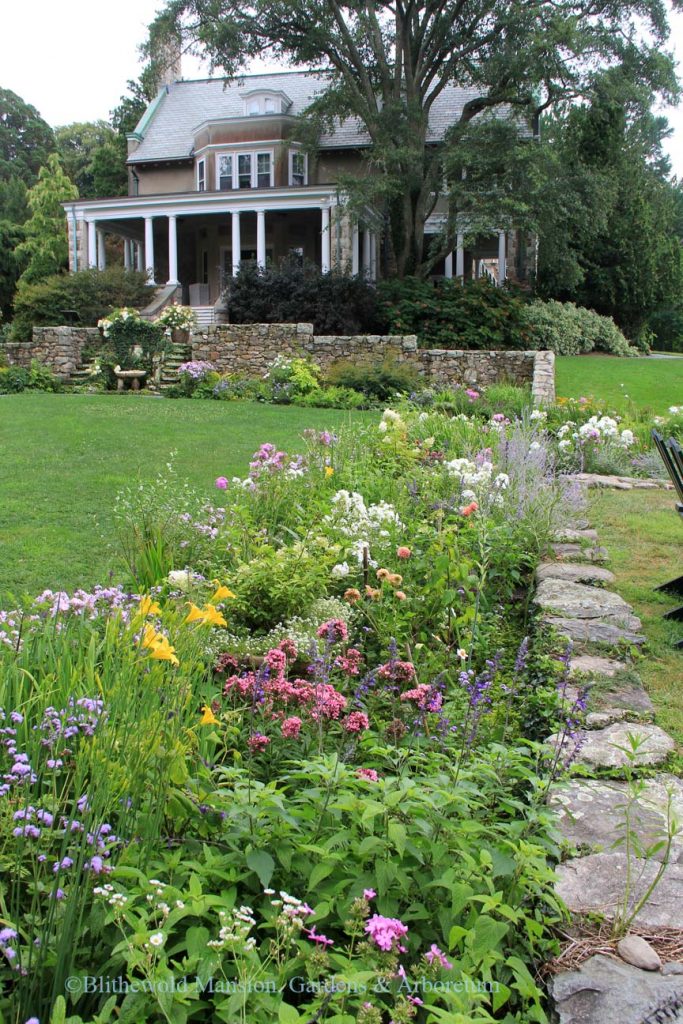
While we were working in the North Garden this week, our intern Becca and I came across a few monarch caterpillars feasting on the swamp milkweed – and then we noticed more and more. We counted at least 15 in all. They are such pretty caterpillars. It’s hard to believe we didn’t even notice them at first. To see so many caterpillars is rare these days as monarch populations have been sadly in steep decline (for more information visit Save the Monarchs).
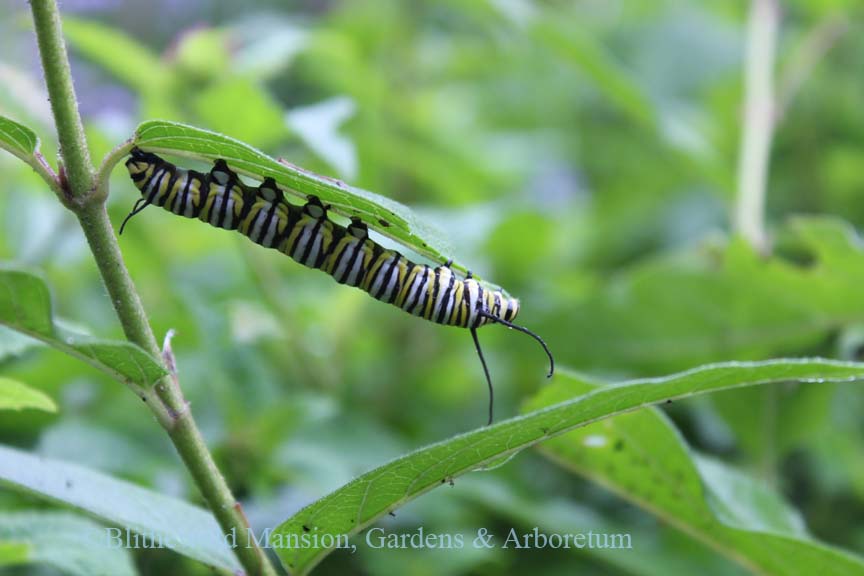
The Monarch butterfly is in need of your help. Its habitat and food supply is shrinking. One of the most effective things you can do is plant milkweed – or create a space on your property where you allow it to reseed. Monarch butterfly caterpillars rely on this plant – it is the only plant they eat. There are several species of milkweed (Asclepias) that will help the monarch caterpillars. We have swamp milkweed (Asclepias incarnata) growing in the North Garden and Pollinator Garden. It has a pretty and fragrant soft pink flower that gives way to the signature pointed seed pods. If you tend to think of milkweed as an unattractive plant, think again. It may not be the most beautiful plant in the garden, but it is not without merits. I’m also willing to bet that you didn’t even notice it in the picture of the North Garden above.
To walk through a garden with butterflies swirling and floating over head is a special kind of magic. Let’s pass this magic down to the next generations by creating gardens friendly to butterflies – and all pollinators!

